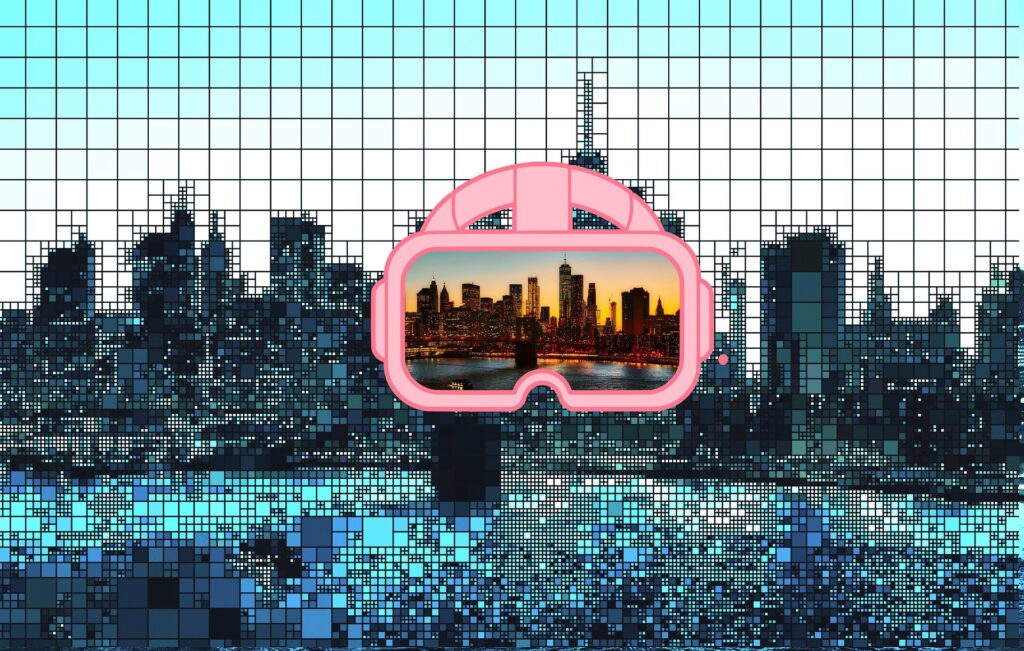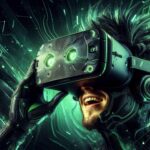
In the era where the lines between both physical and the digital are increasingly blurred to transformative the umbrella term has emerged. Extended Reality or XR more than just a futuristic concept the XR represents a spectrum of technologies that are reshaping how we interact with the information and experiences and each other. From immersive virtual worlds to augmented layers enhancing our physical surroundings XR is the poised to revolutionize industries that redefine entertainment and fundamentally alter the fabric of our daily lives.
Read also: The Potential of Quantum Computing
1. Unpacking the XR Spectrum: A Journey from Reality to Virtuality
At its heart the XR encompasses all the technologies that are blend real and a virtual world. It sits on a continuum with “Reality” at one end and a “Virtuality” at the other end. Understanding this spectrum is key to grasping the full potential of XR.
Augmented Reality (AR):
AR enhances the real world by overlaying digital information into it. Think of Pokémon Go where virtual creatures are appeared in your real world environment through your smart phone screen or IKEA Place that which allows you to visualize furniture in your home before you purchase. AR keeps you grounded in reality while adding a layer of a digital interactivity.
Virtual Reality (VR):
VR on the other hand immerses you that entirely in computer generated environment by using a headset that blocks out the physical world. In VR transports you to different places whether it is a fantastical alien landscape or a historical reconstruction or a simulated training environment. VR creates a sense of presence within the virtual space in it.
Mixed Reality (MR):
Bridging the gap between AR and VR.MR seamlessly blends the real and virtual objects allowing them to interact in real time. Imagine wearing a headset and seeing a virtual object of appear in your living room which you can then walk around and manipulate that even have interact with real world objects. MR creates a hybrid environment where digital and a physical elements coexist and interact.
2. The Engines of Immersion: Hardware and Software Powering XR
The magic of XR is brought to the life by a sophisticated interplay of hardware and a software. On the hardware front devices like VR headsets (e.g. Meta Quest and HTC Vive), AR glasses (e.g. Microsoft Holo Lens) and even advanced smartphones and the tablets serve as the portals to these blended realities.
Complementing the hardware is a robust ecosystem of software and the development tools. Game engines like Unity and Unreal Engine are popular in platforms for creating an interactive XR experiences. Software development kits are provide developers with the necessary tools and the libraries to build AR and VR applications for various platforms by them.
3. Revolutionizing Industries: XR Impact AcrossSectors
XR is not confined to the realm of gaming and with entertainment; it’s rapidly transforming numerous industries.
Healthcare: Surgeons can practice more complex procedures in the VR. Medical students can explore the human anatomy in immersive details and patients can benefit from VR based on pain management and the rehabilitation therapies. AR can be assist doctors during surgery by overlaying the vital patient information to rectify.
Education and Training: XR offers engaging and more interactive learning experiences by the Students. They can take virtual field trips to historical sites or to explore the intricacies of molecular structures in VR. Industries can be utilize VR for training employees in high risk environments or in a complex machinery operation they offering a safe and cost effective alternative to traditional methods for the employees.
Manufacturing and Engineering: AR can provide engineers with the real time data for overlays in equipment maintenance and repairs. While VR enables designers to visualize and to collaborate on a product prototypes in a virtual space before physical production is used.
4. Entertainment Re-imagined: Immersive Experiences and Beyond
The entertainment industry has been from the early adopter of XR and its potential continues to expand. VR offers incredibly immersive gaming experiences. By placing players directly within the game world is more Beyond the gaming. VR is being used for interactive storytelling and virtual concerts and immersive cinematic experiences. AR enhances live events by overlaying digital content onto the real world stage or stadium by providing fans with additional information and to interact the elements. The possibilities for creating the new forms of engaging and a interactive entertainment through XR are virtually limitless.
5. Connecting in New Dimensions: Social Interaction in XR
XR is also evolving as a platform for a social interaction by Virtual reality. Social platforms allow users to connect with others in shared virtual spaces and attend virtual events also collaborate with projects. While still in its early stages the social VR has the potential to bridge geographical distances and to create new forms of online communities. AR can enhance face to face interactions by providing contextual information about the people around them. Enabling shared augmented reality experiences where multiple users can interact with the same virtual objects in a real world setting.
6. Overcoming the Hurdles: Challenges and Limitations of XR
Despite its immense potential the XR still faces several challenges and cost of high end VR and AR hardware can be a barrier to widespread adoption. Technical limitations like such as field of view and resolution and motion sickness in VR. That need to be addressed to improve user experience. Content creation for XR requires specialized skills and can be time consuming and expensive. Furthermore for concerns about privacy data security and the potential for digital addiction need careful consideration as the XR becomes more integrated into our lives in future.
7. The Path Ahead: Trends Shaping the Future of XR
The future of XR is dynamic and exciting with several key trends shaping its trajectory that we can expect to see more affordable and user friendly hardware with improved performance. The development of are more intuitive and be natural user interfaces, such as hand tracking and eye tracking, will enhance the impressiveness and ease of use of XR experiences. Furthermore, the metaverse, a concept of interconnected virtual worlds, is gaining traction and could represent a significant evolution of social interaction and digital commerce within XR.
8. XR for Everyday Life: Integrating into Our Daily Routines
While currently prevalent in specific industries and entertainment XR has the potential to seamlessly integrate into our everyday lives. By Imagine using AR glasses to receive real time directions overlaid on your vision while navigating a new city for using VR to attend a virtual meeting that feels as immersive as being in the same room as your colleagues. AR could revolutionize by how we learn new skills and assist us with household tasks also to provide personalized information on demand. As the technology becomes more accessible and the applications more diverse by XR could become an indispensable part of our daily routines, enhancing productivity, communication, and access to information.
Conclusion: Embracing the Blended Future
Extended Reality is more than just a buzzword. it represents a fundamental shift in how we interact with technology by the world around us. Seamlessly blending the physical and the digital XR offers a powerful tool kit for innovation are across industries for creating richer and more of engaging experiences. Forging new ways to connect and interact. While challenges remain the rapid advancements in hardware and the software.
Buy Now
Quantum Computing for Computer Scientists

